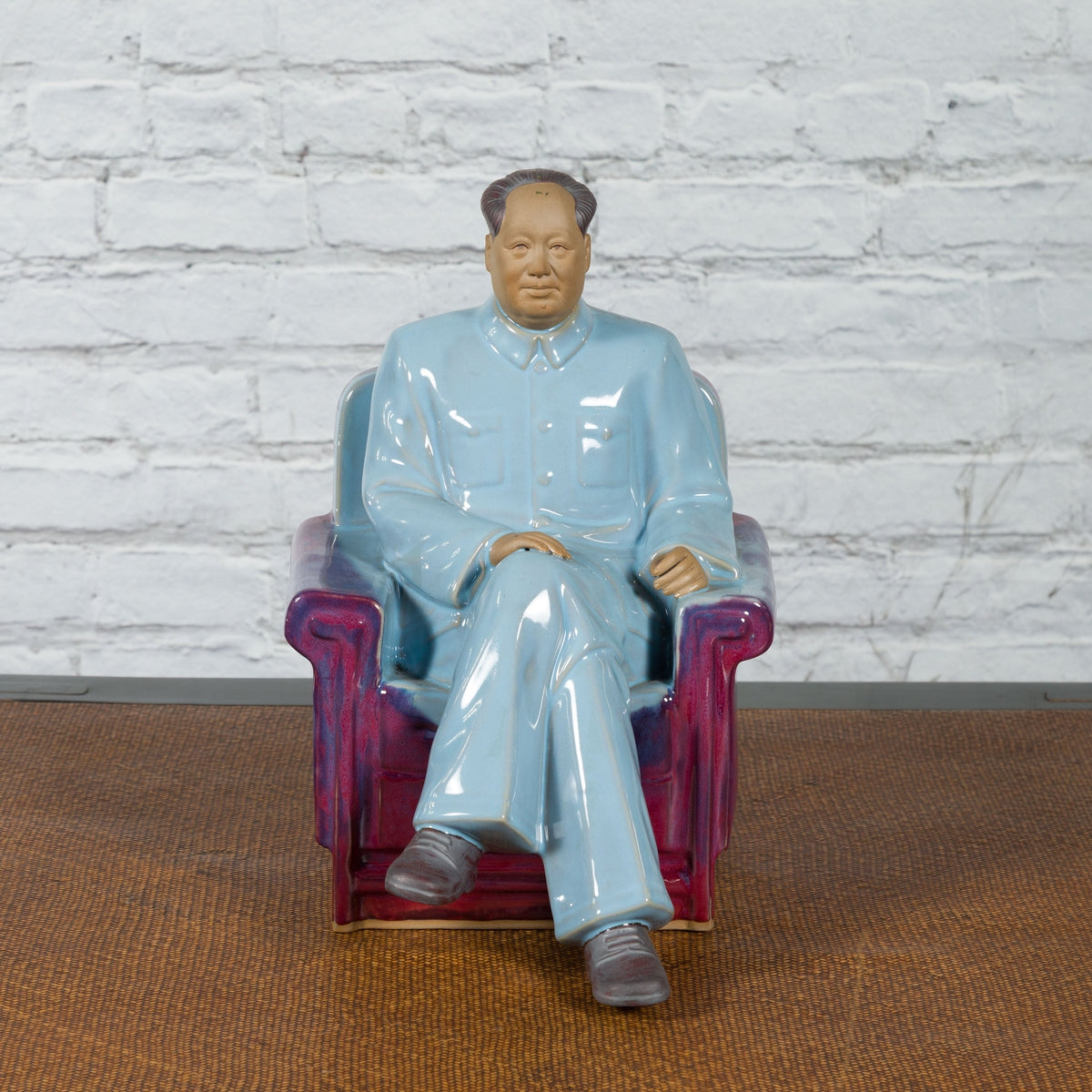























Vintage Glazed Porcelain Statuette of Mao Zedong Seated on an Armchair
✔ In-stock. Ships in 3–5 days direct from FEA Home
Why Buy from FEA Home
Exclusively Ours. Expertly Curated.
- Each piece is hand-selected for rarity and character
- Professionally delivered, expertly handled
- Personal guidance from our in-house team
- Trusted by collectors and designers since 1962
A Chinese porcelain statuette of Mao Zedong from the late 20th century, depicting him seated on a armchair with June style purple and blue glaze. Created in China during the last quarter of the 20th century, this porcelain statuette depicts Mao Zedong (26 December 1893 – 9 September 1976), also known as Chairman Mao. Seated on a low back armchair with out-scrolling arms and purple and blue glaze, Mao is crossing his legs, his right hand resting on his knees and his left on the arms. Mao was a Chinese communist revolutionary who was the founder of the People's Republic of China, which he led as the chairman of the Chinese Communist Party from the establishment of the PRC in 1949 until his death in 1976. Ideologically a Marxist–Leninist, his theories, military strategies, and political policies are collectively known as Maoism.
Mao was the son of a prosperous peasant in Shaoshan, Hunan. He supported Chinese nationalism and had an anti-imperialist outlook early in his life, and was particularly influenced by the events of the Xinhai Revolution of 1911 and May Fourth Movement of 1919. He later adopted Marxism–Leninism while working at Peking University as a librarian and became a founding member of the Chinese Communist Party, leading the Autumn Harvest Uprising in 1927.
Age: Vintage
Origin: China
Each piece is unique with natural variations in age and appearance that add to its character.
Every order ships fully insured and handled with care, with white-glove service available nationwide.
- 24-hour grace period to cancel your order
- Returns accepted within 72 hours of delivery, in original condition and packaging; a 25% restocking fee applies
- Buyers are responsible for return shipping costs; original shipping fees are non-refundable
- Damage reported within 72 hours qualifies for a full refund
Exclusions apply. See full policy for details.
Print Tear Sheet

Contact FEA Home to Order
- Phone: 914-423-3380
- Email: Info@FEAhome.com
- Website: https://www.FEAhome.com
Unlock exclusive trade pricing, personalized service, and early access to one-of-a-kind arrivals - all tailored to interior professionals.
Apply To Join >
Rent rare vintage furniture and statement décor for film, TV, events, and editorial - fast, flexible, and unforgettable.
Rent From Us >
FAQ's
Yes, we're happy to provide additional images or a short video. Click the “Email Us” icon above to open our quick contact form - it will send your inquiry directly to our team with this item’s details.
All items are available to view in our Yonkers, NY showroom. Contact us to schedule a private appointment or confirm availability.
We ensure secure and professional packing for safe delivery using:
- UPS – For smaller items
- Freight Carriers – For larger pieces
- White Glove Delivery – Includes unpacking and placement in your home
- All shipments are fully insured
Visit our Orders, Shipping & Returns page for more information.
For shipping outside the USA, contact us for a shipping quote.
We want you to feel confident in your purchase. Returns may be initiated within 72 hours of delivery if the piece is in its original condition and packaging; a 25% restocking fee applies. If your item arrives damaged, please report it within 72 hours for a full refund.
Read Full Policy →
Contact us to request an exchange or report damage.
Yes, we support designers, stylists, and stagers. Learn more about our Trade Program or Rental Services.
We can reserve select items for up to 72 hours. Click the “Email Us” icon above to open our quick contact form - it will send your inquiry directly to our team with this item’s details.
Most orders ship within 3-5 business days. Tracking to be provided upon shipment.
LOOKING FOR SOMETHING UNIQUE?
Let’s find the perfect piece for your home
Our team is here to help you discover timeless, one-of-a-kind décor.

